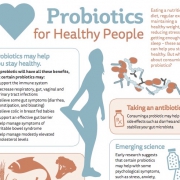Follow up from ISAPP webinar – Probiotics, prebiotics, synbiotics, postbiotics and fermented foods: how to implement ISAPP consensus definitions
By Mary Ellen Sanders PhD, Executive Science Officer, ISAPP
On the heels of the most recent ISAPP consensus paper – this one on postbiotics – ISAPP sponsored a webinar for industry members titled Probiotics, prebiotics, synbiotics, postbiotics and fermented foods: how to implement ISAPP consensus definitions. This webinar featured short presentations outlining definitions and key attributes of these five substances. Ample time remained for the 10 ISAPP board members to field questions from attendees.
When considering the definitions, it’s important to remember that the definition is a starting point – not all criteria can be included. Using the probiotic definition as an example, Prof. Colin Hill noted that the definition is only 15 words – Live microorganisms that, when administered in adequate amounts, confer a health benefit on the host. This is a useful definition, stipulating the core characteristics of a probiotic. However, important criteria such as safety and identity are not specified in the definition yet are clearly delineated in the full paper on probiotics.
Several interesting topics emerged from this discussion, which will be explored in future blog posts. These include:
- What is meant by host health? Microbe mediated benefits are numerous. But not all benefits are a benefit to host health. Benefits for user appearance, pets and potentially livestock may be measurable, economically important and desirable, but may not encompass ‘host health’.
- What types of endpoints are appropriate for studies to meet the requirement of a health benefit? Endpoints that indicate improved health (such as symptom alleviation, reduced incidence of infections or quality of life measures) are targeted. Some physiological measures that may be linked to health (such as increased fecal short chain fatty acids or changes in microbiota composition) may not be sufficient.
- What are the regulatory implications from these definitions? As suggested by the National Law Review article on the ISAPP consensus definitions, attorneys are interested in the scientific positions on how these terms are defined and characterized. Further, some regulatory actions – such as by Codex Alimentarius in defining probiotics – are underway. ISAPP is open to suggestions about the best way to communicate these definitions to regulators.
- Is any follow-up by ISAPP to these papers anticipated in order to clarify criteria and provide simple guidance to their implementation?
Simple guidance to these substances can be found in the infographics: probiotics, probiotic criteria, prebiotics, fermented foods, how are probiotic foods and fermented foods different, synbiotics, and postbiotics. As mentioned above, watch for blog updates on implementation of the definitions for different stakeholder groups.
The recording of this webinar is available here under password protection for ISAPP industry members only.
Related information:
Consensus panel papers, all published in Nature Reviews Gastroenterology and Hepatology:
- Probiotics – ISAPP consensus panel paper
- Prebiotics – ISAPP consensus panel paper
- Synbiotics – ISAPP consensus panel paper
- Fermented foods – ISAPP consensus panel paper
- Postbiotics – ISAPP consensus panel paper















